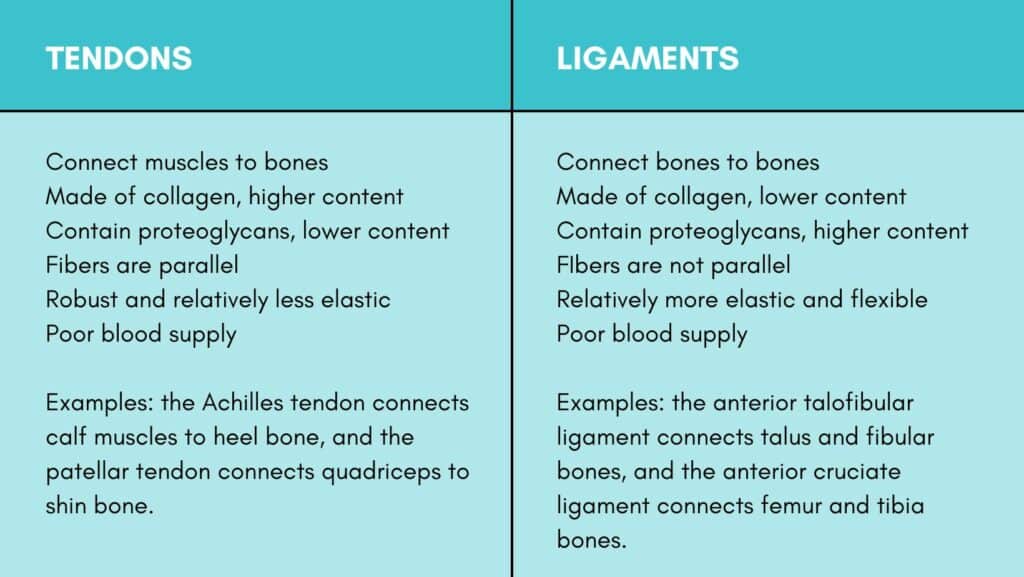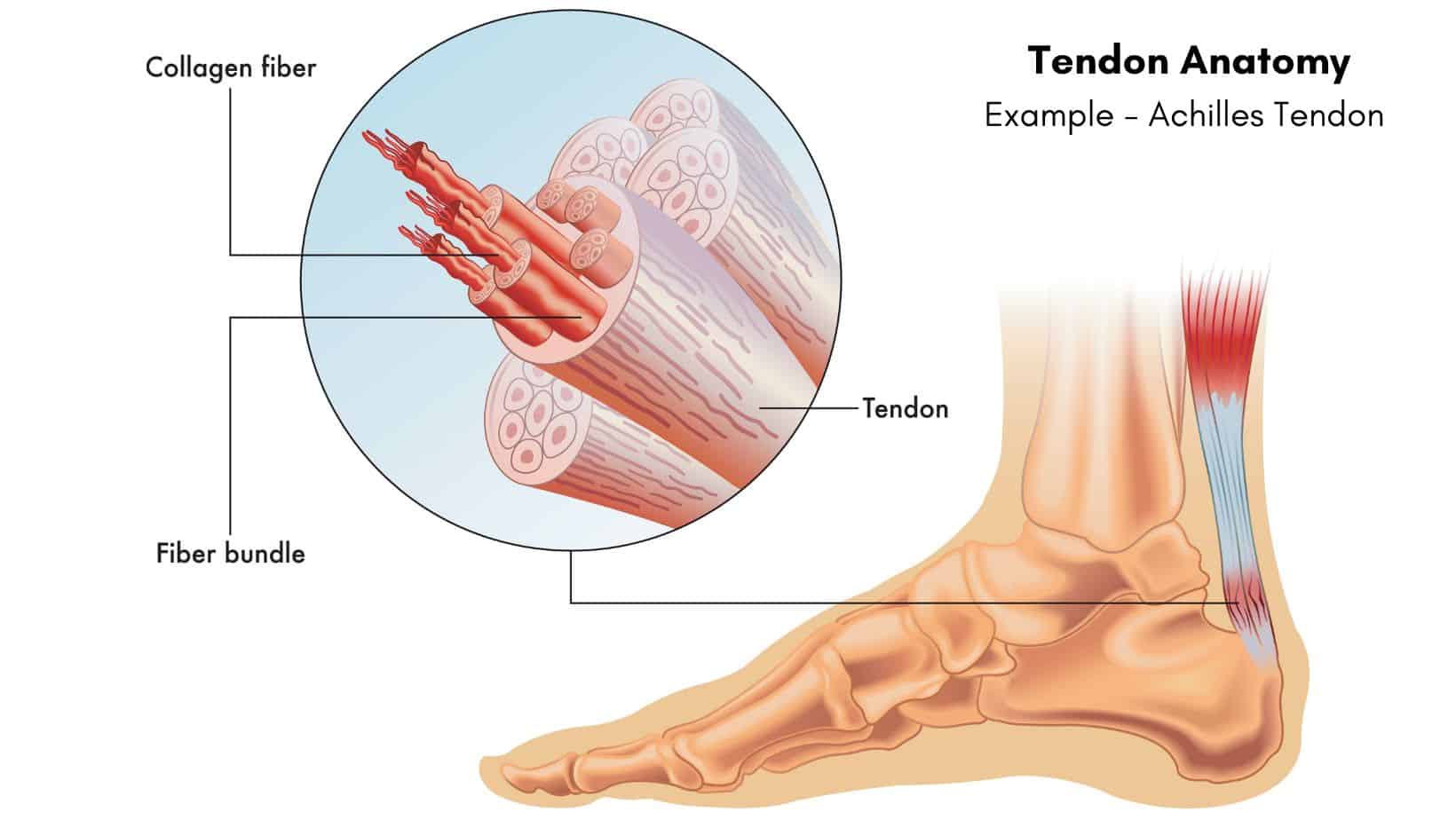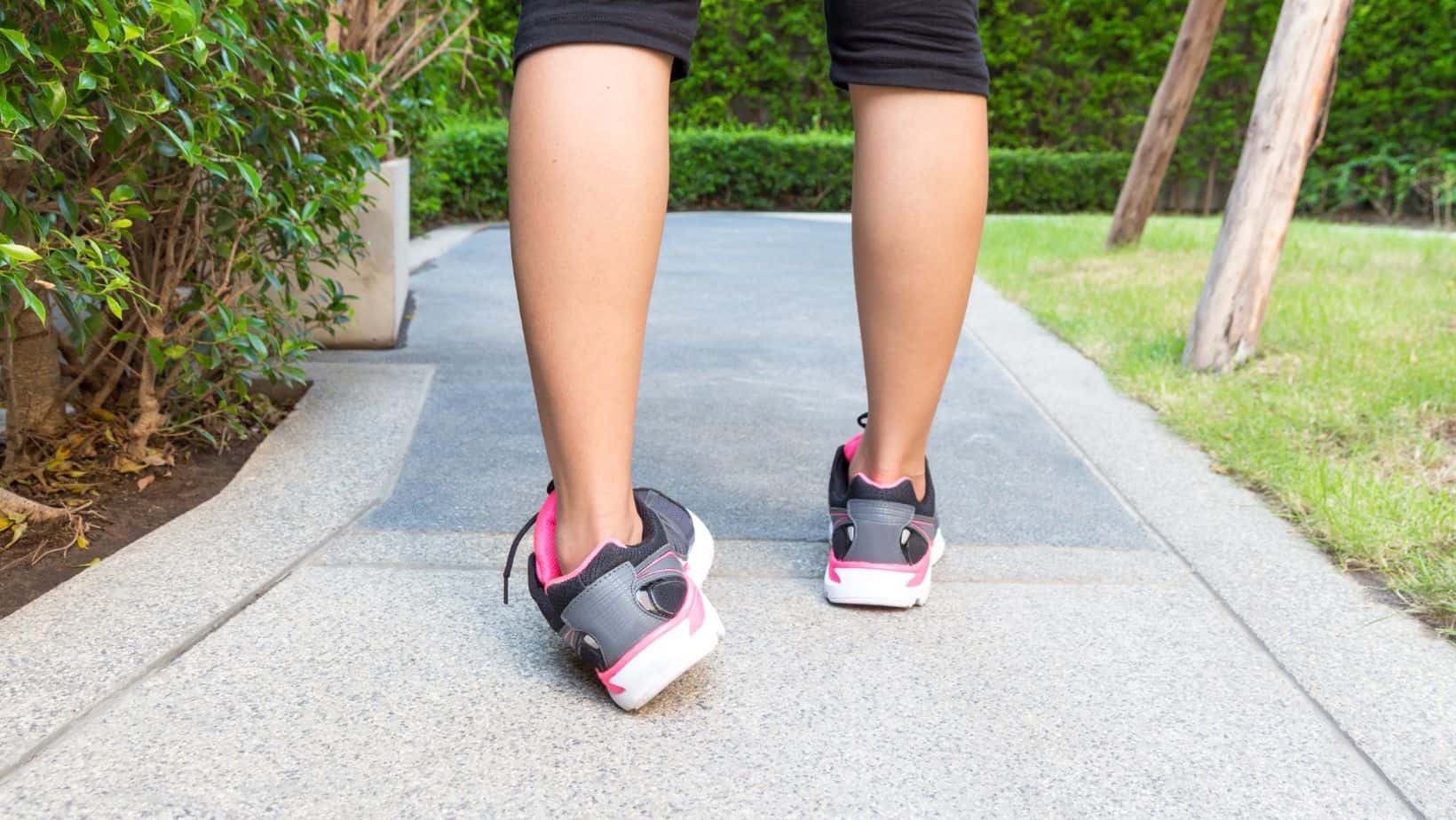Knee Ligaments
Read More >
Both tendons and ligaments are fibrous, connective tissues that exist throughout our body and provide connections. They have subtly different structures. Tendons have a higher percentage of collagen fibers making them less elastic than ligaments and more robust, and ligaments have more proteoglycans than tendons, making them more elastic. The alignment of the fibers that make up these structures is also different, and therefore affects their function. Tendons have parallel aligned fibers, while ligaments do not, although both are compactly arranged.

A tendon is a strong cord-like structure that connects a muscle to a bone. There are approximately 4000 tendons in the human body. The majority of the tendon is made up of type 1 collagen fibers and proteoglycans, which are responsible for the strength and elasticity of the tendon, respectively. They also contain other proteins and glycoproteins. The blood supply to tendons is much less than that of muscles, which gives them a white appearance, and has an impact on the healing time of an injury. In particular, areas of the tendon that are compressed, against a bone, for example, are more likely to be injured and take longer to heal, as the blood supply is further reduced by the compression.


The main role of a tendon is to connect a muscle to a bone so that the muscle can create movement or stability at a joint. In addition to this function, the structure of the tendon lends itself to be a good absorber of kinetic energy as well as a spring to rebound this energy. Take the Achilles tendon, it attaches the two calf muscles to the heel bone. As we land when running, the tendon will help to absorb this energy and reduce the stress on the muscle, as the tendon lengthens it stores the energy and is then able to recoil which provides us the powerful spring to propel us forwards.
Related Articles: Quadriceps Tendonitis, Popliteal Tendon, and Peroneal Tendonitis Advice.
Injury to a tendon is most often related to low overload or overuse, over a sustained period of time, and less often due to a single high overload. Runners, for example, can overload the Achilles tendon by increasing their mileage too quickly or with insufficient rest and recovery. It will not be a single run that has caused the issue but an accumulation of small damage.
Read our related articles:
Insertional Achilles Tendonitis, Mid Portion Achilles Tendinopathy, Peroneal Tendonitis, and Patellar Tendonitis.
Ligaments are tough but elastic structures that can be often flat but have different shapes depending on their location and function. There are about 900 ligaments in the human body. They are predominantly made up of type 1 collagen fibers, and a small percentage of proteoglycans. They also contain other proteins and glycoproteins. The blood supply to ligaments is poor relative to muscles, which affects healing time if there is damage. The blood supply also affects the appearance of ligaments which is usually white or yellow.
Related Articles: Bifurcate Ligament, Spring Ligament, and Deltoid Ligament.


A ligament will not only connect a bone to another bone but it will restrict the movement of those bones in a particular direction. Therefore collectively the ligaments ensure that we keep our joints in good alignment which prevents injury. In addition to this fundamental role, ligaments provide a significant amount of feedback about the position of a joint (proprioception). This allows the brain and body to respond to keep us with balance and coordination.
Related Articles:
MCL Injury, MCL Knee Brace, High Ankle Sprain, and Best Ankle Brace,
Injury to a ligament is more commonly related to a single high overload to the structure, like a sprained ankle. A sprained ankle is caused by a sudden load on one or more ligaments of the foot and ankle, often when running or playing sports when the foot has landed awkwardly and rolled over to the outside.
Read our related articles:
Sprained Ankle, Treatment, and Exercises, as well as Sprained Knee, ACL Sprain, and ACL Rehab Exercises.
This is not medical advice. We recommend a consultation with a medical professional such as James McCormack. He offers Online Physiotherapy Appointments for £45.
Related Articles:
Hamstring Tendonitis
Patellar Tendonitis in Sport
Achilles Tendonitis Advice
Sprained Ankle
ACL Sprain